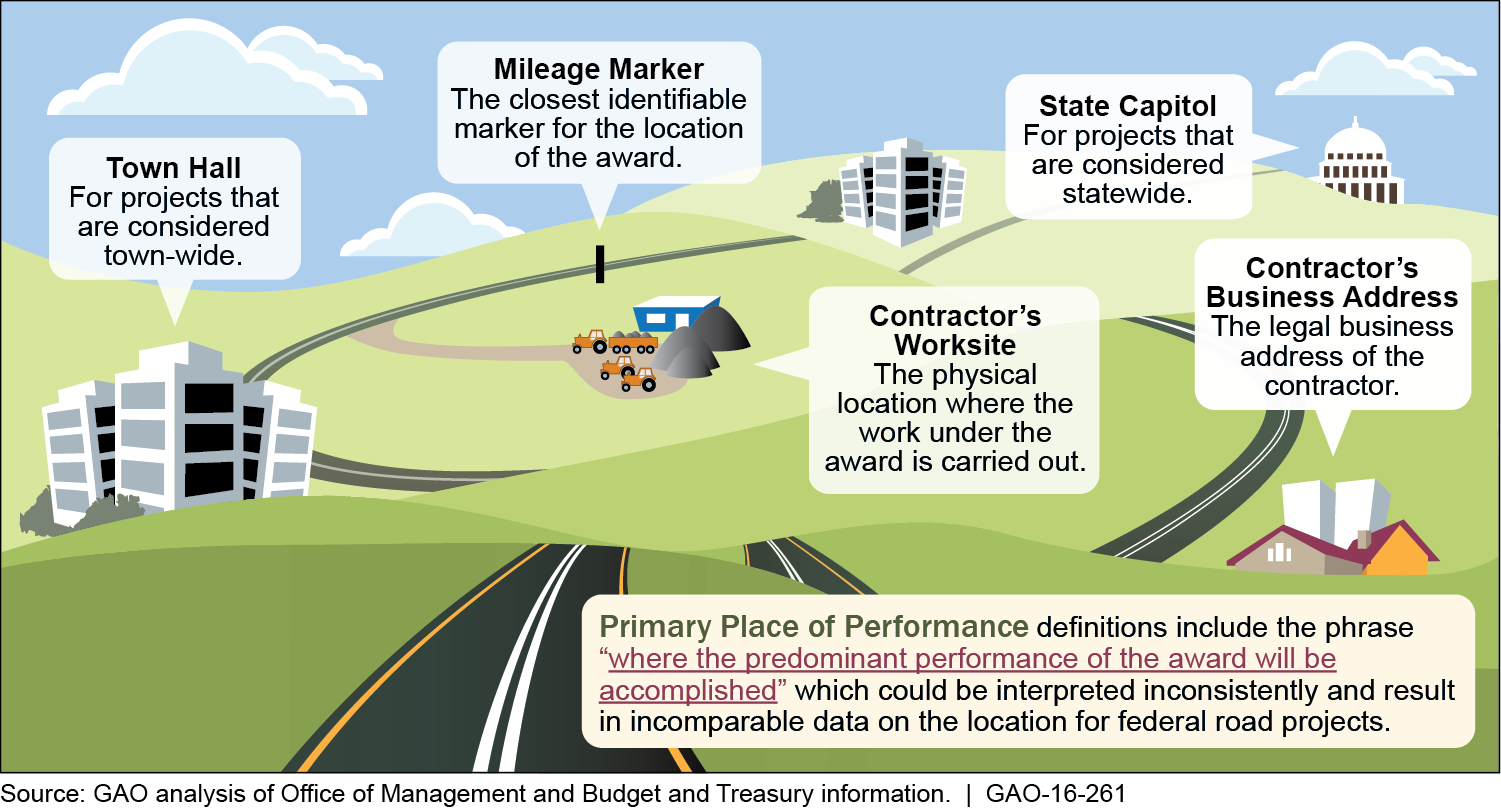
As required by the Digital Accountability and Transparency Act of 2014 (DATA Act), the Office of Management and Budget (OMB) and the Department of the Treasury (Treasury) issued definitions for 57 federal spending data elements. GAO found that most definitions adhered to leading practices derived from international standards for formulating data definitions. Specifically, 12 of the 57 definitions met all 13 leading practices and none met fewer than 9. However, GAO found several definitions that could lead to inconsistent reporting. For example, as shown in the figure below, the Primary Place of Performance definitions’ inclusion of the word “predominant“ leaves much open to interpretation. Without more interpretive clarification, agencies run the risk of reporting data that cannot be aggregated government-wide.
Example of Data Element Definitions That Could Be Interpreted in a Variety of Ways

OMB and Treasury addressed some of GAO’s earlier concerns on draft technical guidance for implementing data standards. However, final technical guidance has not been issued, which could impede agency implementation. While OMB and Treasury have released interim versions of technical guidance, they have not yet released final guidance to provide a stable base for agency implementation. They also are developing an intermediary service (“broker”) to standardize and validate agency data submissions. GAO’s review of selected implementation plans found that agencies need the technical guidance and the intermediary service to be finalized before they can develop detailed agency-level plans. If this guidance is not aligned with agency implementation timelines, agencies may delay taking key steps or need to revise existing plans once final technical guidance is released, thereby hindering their ability to meet DATA Act requirements and timelines.
GAO found that the three agencies it reviewed—the Departments of Agriculture and Health and Human Services, as well as the Corporation for National and Community Service—have formed internal teams and are inventorying their data and assessing any needed changes to policies, processes, and technology to implement the DATA Act.
The DATA Act directed OMB and Treasury to establish government-wide data standards by May 2015 to improve the transparency and quality of federal spending data. Agencies must begin reporting spending data in accordance with these standards by May 2017 and must publicly post spending data in machine-readable formats by May 2018. Consistent with GAO’s mandate under the act, this report is part of a series of products that GAO will provide to the Congress as DATA Act implementation proceeds.
This report (1) identifies steps taken by OMB and Treasury to standardize data element definitions and the extent to which those definitions are consistent with leading practices or face challenges that could affect data quality; (2) reviews efforts by OMB and Treasury to provide agencies with technical implementation guidance and related challenges; and (3) examines the implementation status of selected federal agencies. GAO analyzed data standards against leading practices; reviewed key implementation documents, technical specifications, and applicable guidance; and interviewed staff at OMB, Treasury, and other selected agencies.